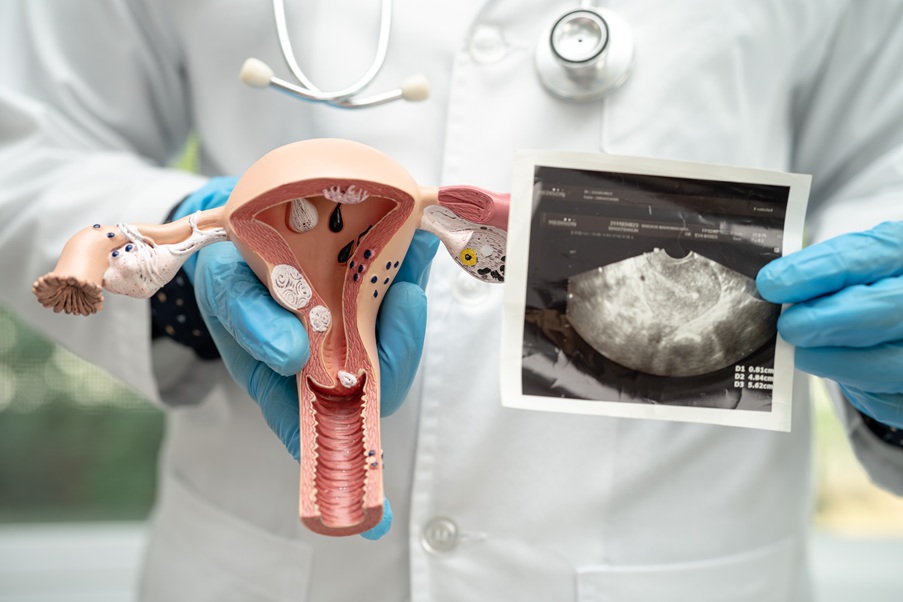Table of contents
Cervical cancer is one of the most common gynecological cancers among Spanish women. According to data from the Spanish Society of Medical Oncology (SEOM), approximately 2,500 new cases of cervical cancer are diagnosed in Spain each year. The incidence is higher in young women, peaking between the ages of 35 and 44—an age when many still wish to become mothers.
Due to the damage caused to the cervix by the disease and its treatment (surgery, radiotherapy, and chemotherapy), cervical cancer can make pregnancy more difficult. It may also affect the uterus’s ability to carry a pregnancy to term, increasing the risk of complications. However, many women have successfully achieved pregnancy after cervical cancer thanks to proper medical care, assisted reproductive treatments, and close monitoring during pregnancy.
If you have had or currently have this type of cancer, it does not necessarily mean the end of your dream of having children. At Tambre, we offer various options to help you achieve pregnancy after cervical cancer. Would you like to learn more?
What is cervical cancer?
Before exploring the fertility options available after cervical cancer, it is important to understand this disease. Also known as cervical carcinoma, this type of cancer develops in the cervix—the lower part of the uterus that connects to the vagina. Cervical cancer originates in the cells lining the cervix and, if not detected and treated in time, can spread to other parts of the body.
Ninety-nine percent of cervical cancer cases are associated with chronic infection with the human papillomavirus (HPV). HPV is the most common sexually transmitted infection. The majority of sexually active individuals come into contact with the virus at some point in their lives. However, not all women infected with HPV will develop cervical cancer. In fact, up to 90% of HPV infections clear on their own within the first two years. But if the body is unable to eliminate the virus and the infection becomes chronic, it can lead to lesions that, over time, may progress into invasive cancer.
This is why regular screening tests, such as Pap smears and HPV tests performed during routine gynecological check-ups, are so important.
We invite you to watch the podcast: cancer and fertility with dr Abraham Zavala
Assisted Reproduction Treatments to achieve pregnancy after cervical cancer
Although options may be limited, having a child after cervical cancer is possible. However, this depends on several factors, including the woman’s age, the time elapsed from diagnosis to recovery, and the type of treatment received. If the cancer is non-invasive and well-localized, only the affected part of the cervix may need to be removed, leaving the uterus intact and preserving fertility. On the other hand, in more advanced cases, a hysterectomy may be necessary, which involves the removal of the entire uterus and makes natural pregnancy impossible.
Beyond the challenges of embryo implantation in the uterus, women who have had cervical cancer and wish to become mothers must also be assessed for healthy egg reserves or other conditions that could prevent pregnancy. Cancer treatments such as chemotherapy or radiotherapy can damage the ovarian reserve, making conception with the woman’s own eggs impossible—even if the uterus remains intact.
Given these considerations, if you have been diagnosed with cervical cancer and wish to become a mother, these are the possible options available to you:
1. Fertility preservation before starting cancer treatment
If you have been diagnosed with cancer and want to preserve your fertility, you can opt for egg or embryo vitrification before beginning treatment. This allows you to have children using your own gametes once you have recovered from the disease.
The process involves controlled hormonal stimulation to encourage egg production, followed by egg retrieval. In Tambre’s laboratory, our specialists carefully select mature eggs suitable for preservation. Using Cryotop® technology, we freeze the eggs at ultra-low temperatures with the help of cryoprotectants that protect their cellular membranes. Thanks to this technique, we achieve an egg survival rate of up to 97% in young patients.
When you are ready to pursue motherhood, we will proceed with the thawing process, followed by In Vitro Fertilisation (IVF) or Intracytoplasmic Sperm Injection (IVF-ICSI) to create an embryo. This embryo will then be transferred to the uterus in an attempt to achieve pregnancy.
We understand that considering egg cryopreservation in such a difficult moment is not easy, but vitrification offers reassurance and hope. It allows you to focus on your cancer treatment while maintaining the possibility of having biological children in the future.
2. Egg Donation
If fertility preservation was not possible before cancer treatment, Tambre offers alternative solutions to achieve pregnancy after cervical cancer. If ovarian stimulation does not yield good results, we can turn to egg donation, provided the uterus is in good condition.
At Tambre, we offer egg donation as an option
At Tambre, we provide the option of egg donation, either using donor eggs and the partner’s sperm or with both donor eggs and donor sperm. In both cases, we perform the IVF procedure in our laboratory to obtain an embryo, which is then transferred to the woman’s uterus. To ensure the highest standards of quality and safety, we have our own IVF and Andrology laboratories, as well as our own sperm and egg banks.

At Tambre, we take care of every last detail
As a clinic specialising in Advanced Reproductive Medicine, we go beyond standardised treatments because we understand that every patient requires a personalised approach. At Tambre, we prioritise accurate diagnosis and tailor treatments to each individual, allowing us to optimise outcomes in complex cases—such as patients who are undergoing or have overcome cervical cancer.
For these cases, we also take specific measures at Tambre:
- Endometrial Preparation: Using medication, we can prepare the endometrium in approximately six days, although a minimum of two weeks is usually recommended for optimal results.
- Cycle Synchronisation in Egg Donation: When using donor eggs, we synchronise the donor’s cycle with that of the recipient to ensure embryo transfer occurs at the most suitable time, increasing the chances of implantation.
Cervical canal dilation
Another specialised technique we offer at Tambre to facilitate assisted reproduction treatments is cervical canal dilation. As mentioned earlier, surgical procedures to remove cervical cancer lesions may sometimes lead to cervical stenosis (narrowing of the cervical canal), which can make it difficult to insert the catheter needed for embryo transfer during an IVF cycle.
To resolve this issue, we can perform a cervical hysteroscopy, a procedure that gently dilates the cervical canal while the patient is under sedation. This ensures that the path is clear for embryo transfer or insemination, improving the chances of a successful pregnancy.
Hope after cervical cancer: a personalised approach
As you can see, there are various treatments and techniques that can help achieve pregnancy after cervical cancer. However, a personalised approach and an accurate diagnosis are essential to determine the best course of action.
If you would like us to assess your case and explore your options, schedule your initial consultation at Tambre today. And remember—if you have not yet started cancer treatment, now is the best time to vitrify your eggs, allowing you to preserve both your gametes and your hopes of motherhood.


